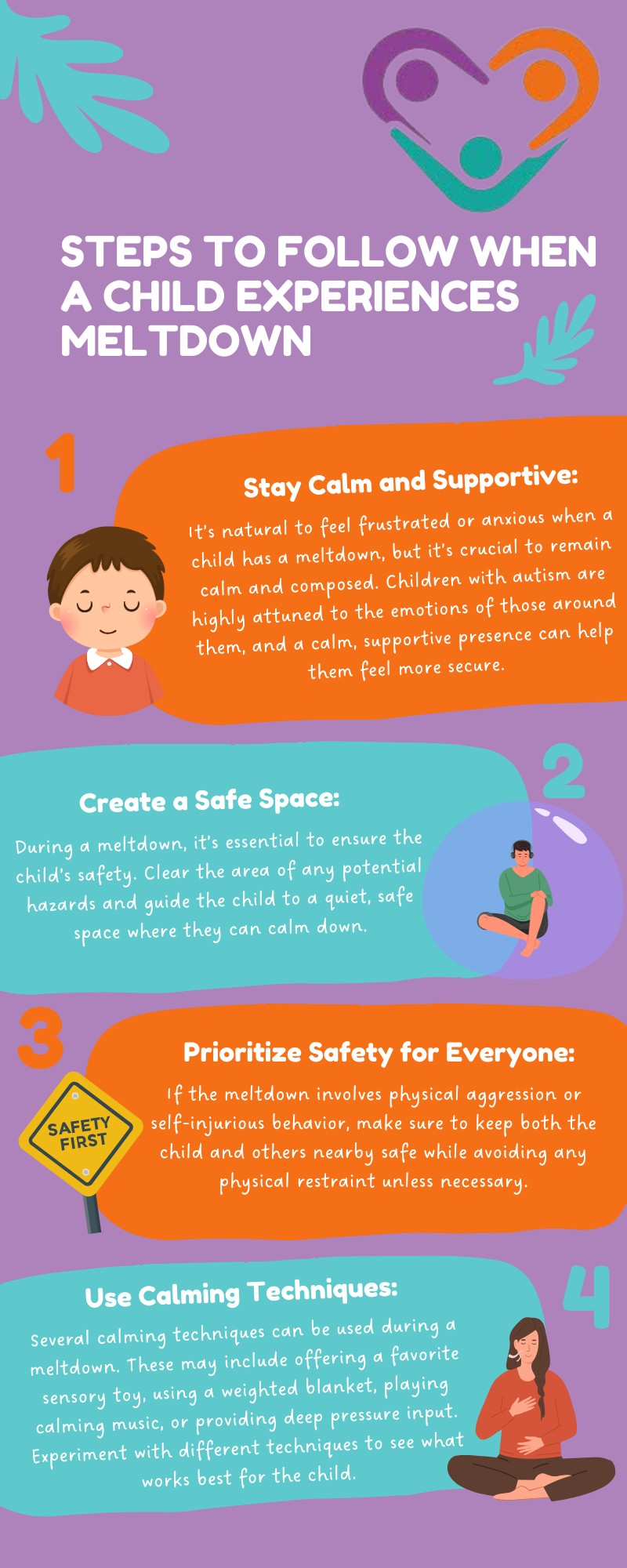Children with autism spectrum disorder often experience meltdowns, which are intense emotional reactions that may include crying, shouting, hitting, or other forms of distress. These outbursts can occur when a child becomes overwhelmed by sensory input, frustration, anxiety, or changes in routine. Approaches focused on teaching independence can help children develop self-regulation strategies, reducing the frequency and intensity of meltdowns.
Meltdowns are not the same as tantrums and require a different management approach. As a parent or caregiver, it’s essential to understand what triggers these meltdowns and how to help children cope effectively.
What are Meltdowns?
Meltdowns are characterized by an overwhelming loss of control, where a child with autism cannot regulate their emotions. Unlike tantrums, which are often a child’s attempt to get attention or manipulate a situation, meltdowns happen when the child is unable to cope with sensory overload or intense emotions.
During a meltdown, the child is typically not trying to misbehave but is instead experiencing distress that they cannot control.
Meltdowns can be triggered by various factors, such as loud noises, changes in routine, frustration from communication difficulties, or overstimulation in busy environments. Understanding the signs and causes of meltdowns is crucial for caregivers to prevent and manage these episodes.

4 Strategies for Preventing Meltdowns in Children with Autism
While meltdowns are sometimes unavoidable, there are several proactive strategies parents and caregivers can use to minimize their occurrence. Preventing meltdowns often involves creating a calm, structured environment and helping children build coping skills to manage their emotions.
Here are some key strategies that have been proven effective:
Create a Predictable Routine
Establishing a consistent daily routine can help children with autism feel more secure. Visual schedules, timers, or reminders can be useful tools for helping children anticipate what will happen next. When children know what to expect, they are less likely to become anxious or overwhelmed by changes.
Limit Sensory Overload
Pay attention to the sensory environment and make adjustments to prevent sensory overload. If bright lights, loud noises, or certain textures are triggering meltdowns, create a sensory-friendly environment at home and in public spaces.
Consider using noise-canceling headphones, dimming lights, or providing quiet spaces for children to retreat to when they need a break.
Teach Emotional Regulation Skills
Teaching children how to recognize and manage their emotions is a key aspect of preventing meltdowns. Emotional regulation skills can be taught through activities such as deep breathing, counting to ten, or using visual aids to identify emotions. Practicing these skills during calm moments can help children use them effectively when they start to feel overwhelmed.
Provide Clear Expectations and Communication Aids
Clear communication can prevent misunderstandings and frustration. For children who have difficulty with verbal language, consider using communication aids such as picture exchange communication systems (PECS) or speech-generating devices.
These tools can help children express their needs, reducing the likelihood of a meltdown due to communication challenges.
What to Do During a Meltdown
Even with the best prevention strategies in place, meltdowns may still occur. Parents and caregivers need to respond appropriately to help calm the child and ensure their safety during an outburst.
Here are some key steps to follow when a meltdown occurs:

How to Help Children Recover Post-Meltdown
After a meltdown, it’s essential to provide support to help the child recover emotionally and mentally. The period following a meltdown can be challenging, as the child may feel exhausted, confused, or upset. Here are some strategies to aid in the recovery process:
Provide Reassurance and Comfort
Once the child has calmed down, offer reassurance and comfort. Acknowledge the child’s feelings and let them know that it’s okay to be upset. Avoid punishing the child for the meltdown, as this can reinforce negative emotions and increase anxiety. Instead, focus on providing comfort and creating a safe, nurturing environment.
Discuss the Meltdown
After the child has recovered, it can be helpful to discuss the meltdown in simple terms. Talk about what triggered the meltdown and explore ways to manage similar situations in the future.
Depending on the child’s age and developmental level, use visuals or social stories to help them understand what happened and how they can cope better next time.
Reinforce Positive Behaviors
Reinforce positive behaviors after a meltdown by offering praise for efforts to manage emotions, such as using calming techniques or communicating their needs. Positive reinforcement helps children understand which behaviors are acceptable and encourages them to continue using coping strategies in the future.
Conclusion
Managing meltdowns in children with autism requires patience, understanding, and the use of effective strategies. By identifying triggers, implementing prevention techniques, and offering support during and after meltdowns, parents and caregivers can help children navigate these challenging moments.
With the right tools and professional support, children with autism can develop emotional regulation skills that will serve them throughout their lives. At Golden Care Therapy, we provide exceptional ABA therapy tailored to meet your child’s unique needs. We have autism services in New Jersey, Indiana, New York, Georgia, and Florida.
Don’t hesitate to contact us todayto learn how we can support your family and help your child thrive. We’re here to guide you every step of the way with compassionate and effective therapy solutions.



